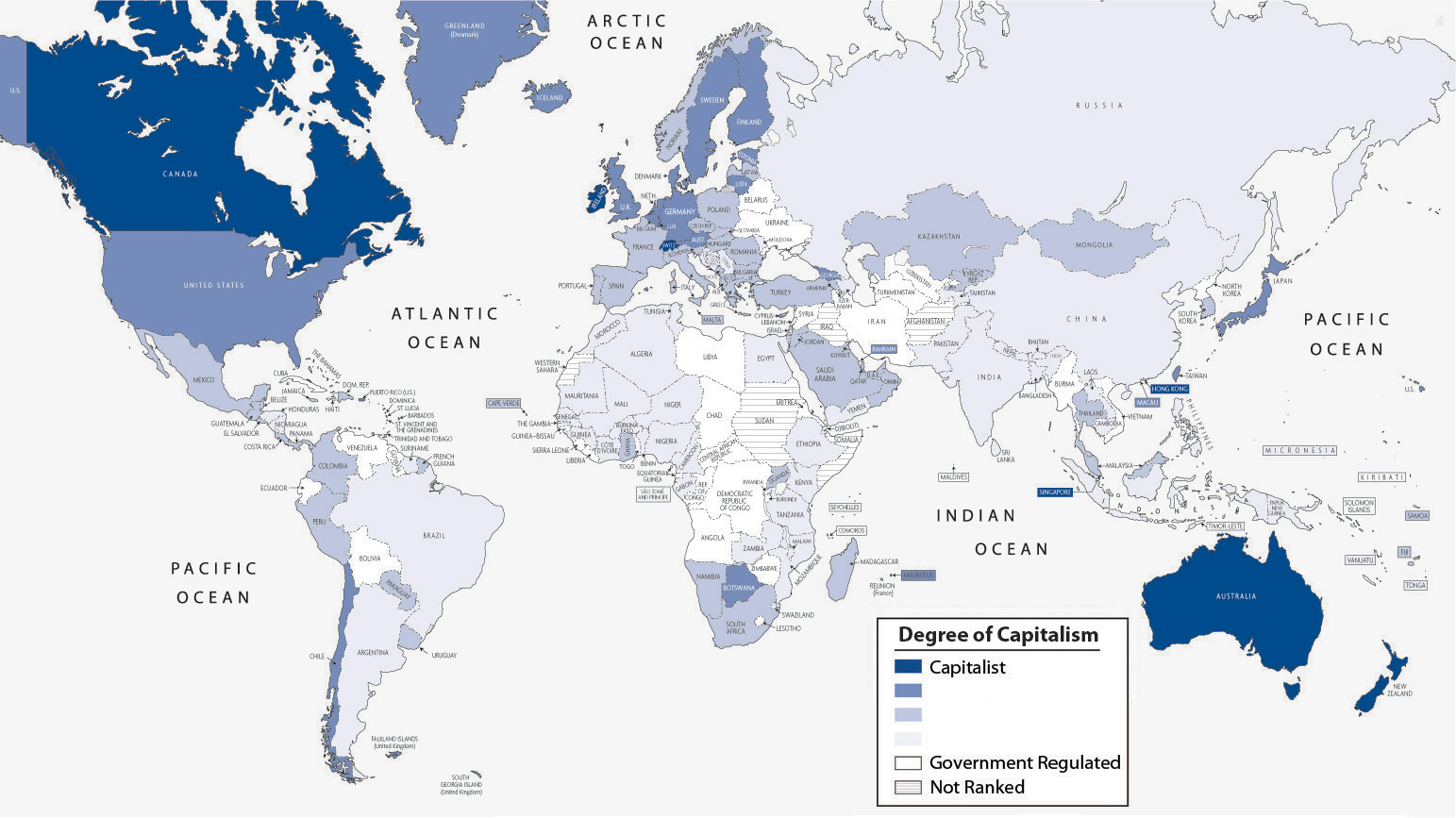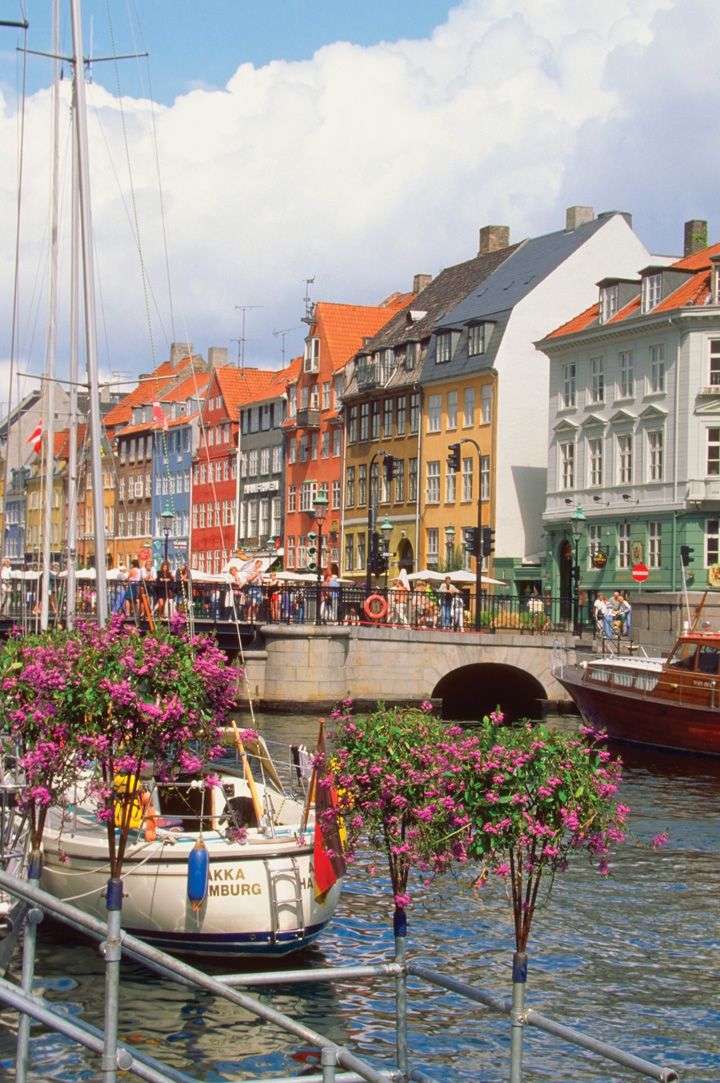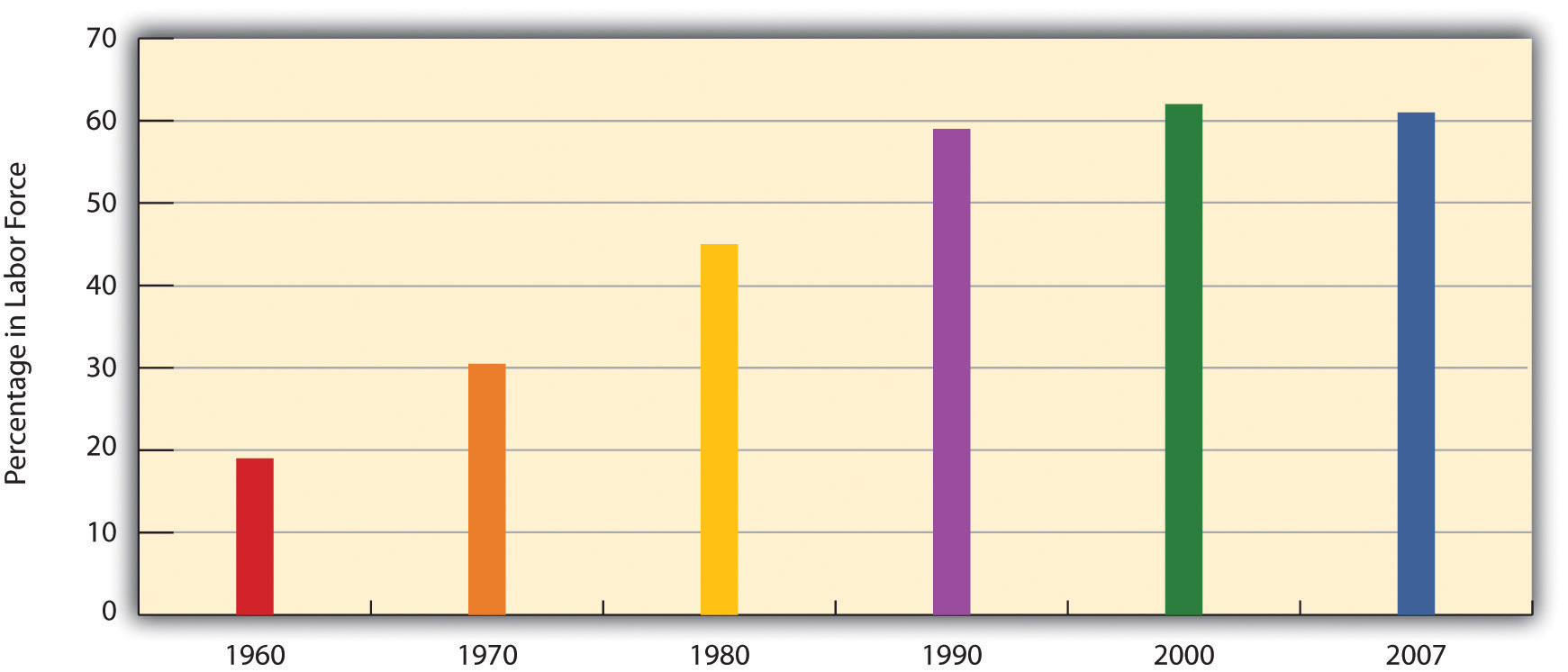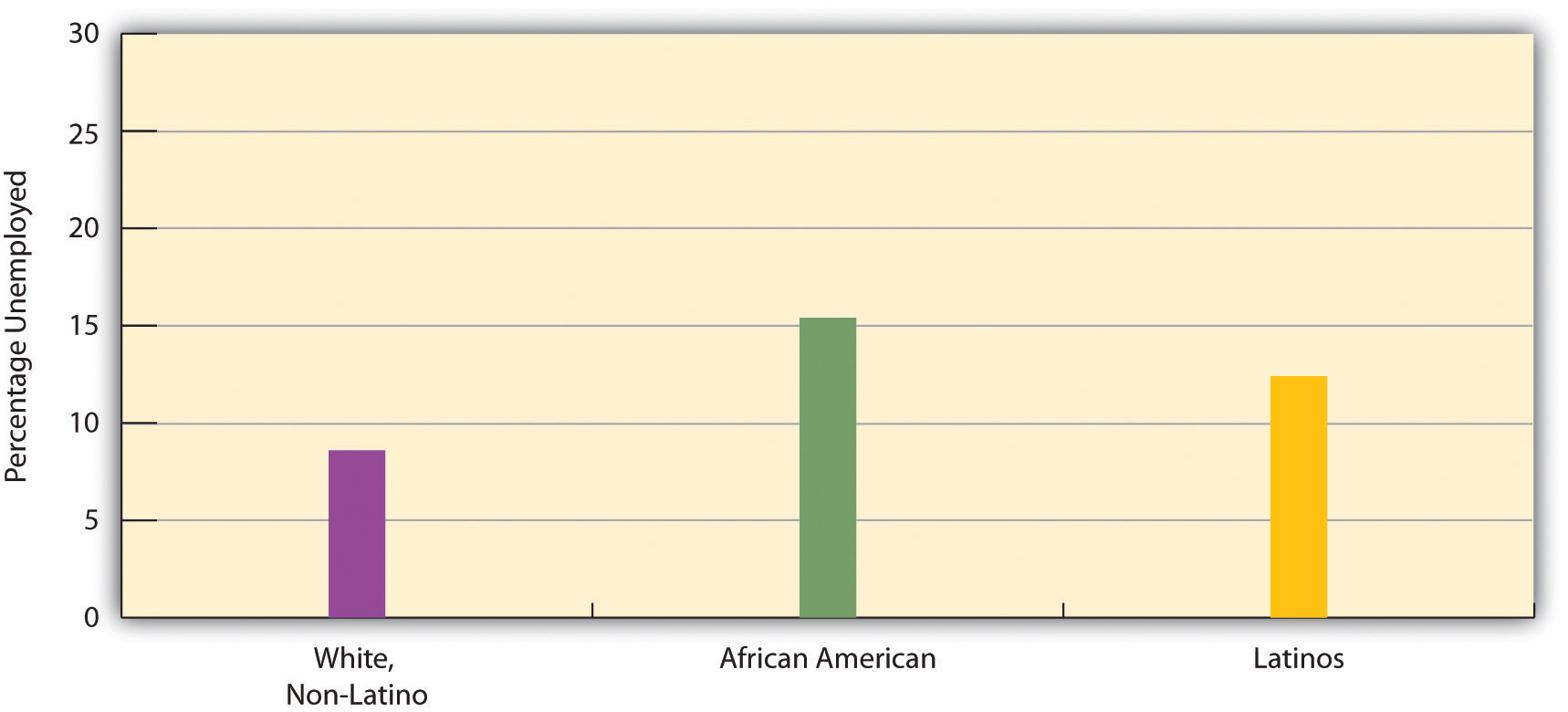13.1: The Economic Institution
- Page ID
- 3436
Objectives
- Analyze the difference between the capitalist and the socialist economic systems.
- Explain the developments that have changed the American economic system.
- Describe industrial economic systems and postindustrial societies.
Universal Generalizations
- Every society has certain needs and wants that must be met in order for health and happiness to be achieved.
- The need for economic institutions is primarily in the problem of scarcity.
- All economics systems comprise three sectors.
- In preindustrial societies, there is little technological development.
- Technological advances changes the nature of work.
- In a capitalist system, the economy is regulated by self-interest and market competition.
- In a socialist system, economic activity is controlled by social need and by the government.
- The United States is one of the most powerful economies in the world.
- The greatest change in American economy is e-commerce.
Guiding Questions
- Do you think you could survive without money?
- Which economic system would you prefer to live under capitalist or socialist?
- How do economic basics affect society?
- What three questions must every society answer?
- How did the American economy change during the 1900’s?
- How has the rise of corporate capitalism changed the relationship between business ownership and control?
- What qualities must a successful entrepreneur possess?
- How does entrepreneurship affect the economy?
Economic Development
When we hear the term economy, it is usually in the context of how the economy “is doing”: Is inflation soaring or under control? Is the economy growing or shrinking? Is unemployment rising, declining, or remaining stable? Are new college graduates finding jobs easily or not? All these questions concern the economy, but sociologists define economy more broadly as the social institution that organizes the production, distribution, and consumption of a society’s goods and services. Defined in this way, the economy touches us all.
Economy is one of human society’s earliest social structures. Our earliest forms of writing (such as Sumerian clay tablets) were developed to record transactions, payments, and debts between merchants. As societies grow and change, so do their economies. The economy of a small farming community is very different from the economy of a large nation with advanced technology. In this chapter, we will examine different types of economic systems and how they have functioned in various societies.
The economy is composed of three sectors. The primary sector is the part of the economy that takes and uses raw materials directly from the natural environment. Its activities include agriculture, fishing, forestry, and mining. The secondary sector of the economy transforms raw materials into finished products and is essentially the manufacturing industry. Finally, the tertiary sector is the part of the economy that provides services rather than products; its activities include clerical work, health care, teaching, and information technology services.
Societies differ in many ways, but they all have to produce, distribute, and consume goods and services. How this happens depends on which sectors of the economy are most important. This latter variable in turn depends heavily on the level of a society’s development. Generally speaking, the less developed a society’s economy, the more important its primary sector; the more developed a society’s economy, the more important its tertiary sector. As societies developed economically over the centuries, the primary sector became less important and the tertiary sector became more important. Let’s see how this happened.


The dominant economic systems of the modern era have been capitalism and socialism, and there have been many variations of each system across the globe. Countries have switched systems as their rulers and economic fortunes have changed. For example, Russia has been transitioning to a market-based economy since the fall of communism in that region of the world. Vietnam, where the economy was devastated by the Vietnam War, restructured to a state-run economy in response, and more recently has been moving toward a socialist-style market economy. In the past, other economic systems reflected the societies that formed them. Many of these earlier systems lasted centuries. These changes in economies raise many questions for sociologists. What are these older economic systems? How did they develop? Why did they fade away? What are the similarities and differences between older economic systems and modern ones?
Preindustrial Societies
The earliest societies were hunting-and-gathering societies in which people eked out a meager existence by hunting animals and gathering plants to feed themselves. Most of their waking hours were devoted to these two tasks, and no separate economic institution for the production and distribution of goods and services existed. The horticultural and pastoral societies that next developed also lacked a separate economy. Although people in these societies raised animals and/or grew crops and were better off than their hunting-and-gathering counterparts, these tasks, too, were done within the family unit and monopolized most of their time. No separate institution for the production and distribution of these sources of food was involved.
This separate institution—the economy—finally did appear with the advent of agricultural societies about 5,000 years ago. These societies were able to produce food surpluses thanks to the invention of the plow and the wheel and other technological advances. These surpluses led to extensive trade within the societies themselves and also with other societies. The rise of trade was the first appearance of a separate economy. People also had to make the plows and wheels and repair them when they broke, and new crafts jobs arose to perform these functions. These jobs, too, marked the development of a separate economy. Despite this development, most people’s work still took place in or very near their homes. Craftspeople and merchants may have been part of the new economy, but most still worked out of their homes or very near them.
Industrialization and the Division of Labor
Work and home finally began to separate in the 1700s and 1800s as machines and factories became the primary means of production with the emergence of industrial societies. For the first time, massive numbers of people worked in locations separate from their families, and they worked not for themselves and their families but for an employer. Whole industries developed to make the machines and build the factories and to use the machines and factories to manufacture household goods, clothing, and many other products. As should be clear, the secondary sector of the economy quickly became dominant. Perhaps inevitably it led to a growth in the tertiary (service) sector to respond to the demands of an industrial economy. For example, enterprises such as banks emerged to handle the money that industrialization brought not only to people with names like Carnegie and Rockefeller but also to a growing middle class of factory managers and the businesspeople that bought and sold the products that factories were producing.
One important consequence of industrialization was the specialization of work, more commonly called the division of labor. In agricultural societies, the craftspeople who made plows, wheels, and other objects would make the whole object, not just a part of it, and then sell it themselves to a buyer. With the advent of the division of labor under industrialization, this process became more specialized: some factory workers would make only one part of an object, other factory workers would make a second part, and so on; other workers would package and ship the item; and still other workers would sell it. This division of labor meant that workers became separated from the fruits of their labor, to paraphrase Karl Marx, who also worried that the type of work just described was much more repetitive and boring for workers than the craft work that characterized earlier societies. Because of these problems, Marx said, workers in industrial societies were alienated both from their work and by their work.
Postindustrial Societies
Today much of the world has moved from an industrial economy to a postindustrial economy. This is the information age, in which smartphones, netbooks, tablets, and other high-tech equipment have begun to replace machines and factories as the major means of production and in which the tertiary sector has supplanted the secondary sector. Although the information age has brought with it jobs and careers unimaginable a generation ago, it has also meant that a college education has become increasingly important for stable and well-paid employment. Postindustrial economies, then, are leaving behind workers without college degrees, who used to fare well in the manufacturing industries.
One way scholars understand the development of different types of societies (like agricultural, industrial, and postindustrial) is by examining their economies in terms of four sectors: primary, secondary, tertiary, and quaternary. Each has a different focus. The primary sector extracts and produces raw materials (like metals and crops). The secondary sector turns those raw materials into finished goods. The tertiary sector provides services: child care, health care, and money management. Finally, the quaternary sector produces ideas; these include the research that leads to new technologies, the management of information, and a society’s highest levels of education and the arts (Kenessey 1987).
In underdeveloped countries, the majority of the people work in the primary sector. As economies develop, more and more people are employed in the secondary sector. In well-developed economies, such as those in the United States, Japan, and Western Europe, the majority of the workforce is employed in service industries. In the United States, for example, almost 80 percent of the workforce is employed in the tertiary sector (U.S. Bureau of Labor Statistics 2011).
The rapid increase in computer use in all aspects of daily life is a main reason for the transition to an information economy. Fewer people are needed to work in factories because computerized robots now handle many of the tasks. Other manufacturing jobs have been outsourced to less-developed countries as a result of the developing global economy. The growth of the internet has created industries that exist almost entirely online. Within industries, technology continues to change how goods are produced. For instance, the music and film industries used to produce physical products like CDs and DVDs for distribution. Now those goods are increasingly produced digitally and streamed or downloaded at a much lower physical manufacturing cost. Information and the wherewithal to use it creatively become commodities in a postindustrial economy.
With the information age has also come an increasing globalization of the economy. The Internet connects workers and industries across the world, and multinational corporations have plants in many countries that make products for consumers in other countries. What happens economically in one part of the world can greatly affect what happens economically in other parts of the world. If the economies of Asia sour, their demand for U.S. products may decline, forcing a souring of the U.S. economy. A financial crisis in Greece and other parts of Europe during the spring of 2010 caused the stock markets in the United States to plunge. The world is indeed getting smaller all the time. We will return later to the implications of the postindustrial economy for U.S. workers.

Economic Models
The two major economic systems in modern societies are capitalism and socialism. In practice, no one society is purely capitalist or socialist, so it is helpful to think of capitalism and socialism as lying on opposite ends of a continuum. Societies’ economies mix elements of both capitalism and socialism but do so in varying degrees, so that some societies lean toward the capitalist end of the continuum, while other societies lean toward the socialist end. For example, the United States is a capitalist nation, but the government still regulates many industries to varying degrees. The industries usually would prefer less regulation, while their critics usually prefer more regulation. The degree of such regulation was the point of controversy after the failure of banks and other financial institutions in 2008 and 2009 and after the BP oil spill in 2010. Let’s see how capitalism and socialism differ.
Capitalism
Capitalism is an economic system in which the means of production are privately owned. By means of production, we mean everything—land, tools, technology, and so forth—that is needed to produce goods and services. As outlined by famed Scottish philosopher Adam Smith (1723–1790), widely considered the founder of modern economics, the most important goal of capitalism is the pursuit of personal profit (Smith, 1776/1910).Smith, A. (1910). The wealth of nations. London, England: J. M. Dent & Sons; New York, NY: E. P. Dutton. (Original work published 1776) As individuals seek to maximize their own wealth, society as a whole is said to benefit. Goods get produced, services are rendered, people pay for the goods and services they need and desire, and the economy and society as a whole prosper.
As people pursue personal profit under capitalism, they compete with each other for the greatest profits. Businesses try to attract more demand for their products in many ways, including lowering prices, creating better products, and advertising how wonderful their products are. In capitalist theory, such competition helps ensure the best products at the lowest prices, again benefiting society as a whole. Such competition also helps ensure that no single party controls an entire market. According to Smith, the competition that characterizes capitalism should be left to operate on its own, free of government intervention or control. For this reason, capitalism is often referred to as laissez-faire (French for “leave alone”) capitalism, and terms to describe capitalism include the free-enterprise system and thefree market.
The hallmarks of capitalism, then, are private ownership of the means of production, the pursuit of profit, competition for profit, and the lack of government intervention in this competition.

Capitalism in Practice
As capitalists began to dominate the economies of many countries during the Industrial Revolution, the rapid growth of businesses and their tremendous profitability gave some owners the capital they needed to create enormous corporations that could monopolize an entire industry. Many companies controlled all aspects of the production cycle for their industry, from the raw materials to the production to the stores in which they were sold. These companies were able to use their wealth to buy out or stifle any competition.
In the United States, the predatory tactics used by these large monopolies caused the government to take action. Starting in the late 1800s, the government passed a series of laws that broke up monopolies and regulated how key industries—such as transportation, steel production, and oil and gas exploration and refining—could conduct business.
The United States is considered a capitalist country. However, the U.S. government has a great deal of influence on private companies through the laws it passes and the regulations enforced by government agencies. Through taxes, regulations on wages, guidelines to protect worker safety and the environment, plus financial rules for banks and investment firms, the government exerts a certain amount of control over how all companies do business. State and federal governments also own, operate, or control large parts of certain industries, such as the post office, schools, hospitals, highways and railroads, and many water, sewer, and power utilities. Debate over the extent to which the government should be involved in the economy remains an issue of contention today. Some criticize such involvements as socialism (a type of state-run economy), while others believe intervention is necessary to protect the rights of workers and the well-being of the general population.
Socialism

The features of socialism are the opposite of those just listed for capitalism and were spelled out most famously by Karl Marx. Socialism is an economic system in which the means of production are collectively owned, usually by the government. Whereas the United States has several airlines that are owned by airline corporations, a socialist society might have one government-owned airline.
The most important goal of socialism is not the pursuit of personal profit but rather work for the collective good: the needs of society are considered more important than the needs of the individual. Because of this view, individuals do not compete with each other for profit; instead they work together for the good of everyone. If under capitalism the government is supposed to let the economy alone, under socialism the government controls the economy.
The ideal outcome of socialism, said Marx, would be a truly classless or communist society. In such a society all members are equal, and stratification does not exist. Obviously Marx’s vision of a communist society was never fulfilled, and nations that called themselves communist departed drastically from his vision of communism.
The focus in socialism is on benefitting society, whereas capitalism seeks to benefit the individual. Socialists claim that a capitalistic economy leads to inequality, with unfair distribution of wealth and individuals who use their power at the expense of society. Socialism strives, ideally, to control the economy to avoid the problems inherent in capitalism.
Societies can be ranked on a continuum ranging from mostly capitalist to mostly socialist. At one end of the continuum, we have societies characterized by a relatively free market, and at the other end we have those characterized by strict government regulation of the economy. Figure 13.1.5 "Capitalism and Socialism Across the Globe" depicts the nations of the world along this continuum. Capitalist nations are found primarily in North America and Western Europe but also exist in other parts of the world.

Socialism in Practice
As with capitalism, the basic ideas behind socialism go far back in history. Plato, in ancient Greece, suggested a republic in which people shared their material goods. Early Christian communities believed in common ownership, as did the systems of monasteries set up by various religious orders. Many of the leaders of the French Revolution called for the abolition of all private property, not just the estates of the aristocracy they had overthrown. Thomas More's Utopia, published in 1516, imagined a society with little private property and mandatory labor on a communal farm. Most experimental utopian communities had the abolition of private property as a founding principle.
Modern socialism really began as a reaction to the excesses of uncontrolled industrial capitalism in the 1800s and 1900s. The enormous wealth and lavish lifestyles enjoyed by owners contrasted sharply with the miserable conditions of the workers.
Some of the first great sociological thinkers studied the rise of socialism. Max Weber admired some aspects of socialism, especially its rationalism and how it could help social reform, but he worried that letting the government have complete control could result in an "iron cage of future bondage" (Greisman and Ritzer 1981).
Pierre-Joseph Proudon (1809−1865) was another early socialist who thought socialism could be used to create utopian communities. In his 1840 book, What Is Property?, he famously stated that “property is theft” (Proudon 1840). By this he meant that if an owner did not work to produce or earn the property, then the owner was stealing it from those who did. Proudon believed economies could work using a principle called mutualism, under which individuals and cooperative groups would exchange products with one another on the basis of mutually satisfactory contracts (Proudon 1840).
By far the most important influential thinker on socialism was Karl Marx. Through his own writings and those with his collaborator, industrialist Friedrich Engels, Marx used a scientific analytical process to show that throughout history the resolution of class struggles caused changes in economies. He saw the relationships evolving from slave and owner, to serf and lord, to journeyman and master, to worker and owner. Neither Marx nor Engels thought socialism could be used to set up small utopian communities. Rather, they believed a socialist society would be created after workers rebelled against capitalistic owners and seized the means of production. They felt industrial capitalism was a necessary step that raised the level of production in society to a point it could progress to a socialist state (Marx and Engels 1848). These ideas formed the basis of the sociological perspective of social conflict theory.
Comparing Capitalism and Socialism
People have debated the relative merits of capitalism and socialism at least since the time of Marx (Bowles, 2007; Cohen, 2009).Bowles, P. (2007). Capitalism. New York, NY: Pearson/Longman; Cohen, G. A. (2009). Why not socialism? Princeton, NJ: Princeton University Press. Compared to socialism, capitalism seems to have several advantages. It produces greater economic growth and productivity, at least in part because it provides more incentives (i.e., profit) for economic innovation. It also is often characterized by greater political freedom in the form of civil rights and liberties. As an economic system, capitalism seems to lend itself to personal freedom: because its hallmarks include the private ownership of the means of production and the individual pursuit of profit, there is much more emphasis in capitalist societies on the needs and desires of the individual and less emphasis on the need for government intervention in economic and social affairs.
Yet capitalism also has its drawbacks. There is much more economic inequality in capitalism than in socialism. Although capitalism produces economic growth, not all segments of capitalism share this growth equally, and there is a much greater difference between the rich and poor than under socialism. People can become very rich in capitalist nations, but they can also remain quite poor. Several Western European nations that are more socialist than the United States have fewer extremes of wealth and poverty and take better care of their poor.
Another possible drawback depends on whether you prefer competition or cooperation. Important values in the United States include competition and individualism, both of which arguably reflect this nation’s capitalist system. Children in the United States are raised with more of an individual orientation than children in socialist societies, who learn that the needs of their society are more important than the needs of the individual. Whereas U.S. children learn to compete with each other for good grades, success in sports, and other goals, children in socialist societies learn to cooperate to achieve tasks.
More generally, capitalism is said by its critics to encourage selfish and even greedy behavior: if individuals try to maximize their profit, they do so at the expense of others. In competition, someone has to lose. A company’s ultimate aim, and one that is generally lauded, is to maximize its profits by driving another company out of the market altogether. If so, that company succeeds even if some other party is hurting. The small Mom-and-Pop grocery stores, drugstores, and hardware stores are almost a thing of the past, as big-box stores open their doors and drive their competition out of business. To its critics, then, capitalism encourages harmful behavior. Yet it is precisely this type of behavior that is taught in business schools.
Democratic Socialism
Some nations combine elements of both capitalism and socialism and are called social democracies, while their combination of capitalism and socialism is called democratic socialism. In these nations, which include Denmark, Sweden, and several other Western European nations, the government owns several important industries, but much property remains in private hands, and political freedom is widespread. The government in these nations has extensive programs to help the poor and other people in need. Although these nations have high tax rates to help finance their social programs, their experience indicates it is very possible to combine the best features of capitalism and socialism while avoiding their faults.

Learning From Other Societies
Social Democracy in Scandinavia
The five Scandinavian nations, also called the Nordic nations, are Denmark, Finland, Iceland, Norway, and Sweden. These nations differ in many ways, but they also share many similarities. In particular, they are all social democracies, as their governments own important industries while their citizens enjoy much political freedom. Each nation has the three branches of government with which most people are familiar—executive, judicial, and legislative—and each nation has a national parliament to which people are elected by proportional representation.
Social democracies like the Scandinavian nations are often called controlled capitalist market economies. The word controlled here conveys the idea that their governments either own industries or heavily regulate industries they do not own. According to social scientist Tapio Lappi-Seppälä of Finland, a key feature of these social democracies’ economies is that inequality in wealth and income is not generally tolerated. Employers, employees, and political officials are accustomed to working closely to ensure that poverty and its related problems are addressed as much as possible and in as cooperative a manner as possible.
Underlying this so-called social welfare model is a commitment to universalism. All citizens, regardless of their socioeconomic status or family situation, receive various services, such as child care and universal health care, that are free or heavily subsidized. To support this massive provision of benefits, the Scandinavian nations have very high taxes that their citizens generally accept as normal and necessary.
This model has been praised by political scientist Torben Iversen, who lauds its goal of achieving full employment and equality. This attempt has not been entirely free of difficulties but overall has been very successful, as the Scandinavian nations rank at or near the top in international comparisons of health, education, economic well-being, and other measures of quality of life. The Scandinavian experience of social democracy teaches us that it is very possible to have a political and economic model that combines the best features of capitalism and socialism while retaining the political freedom that citizens expect in a democracy. (Berman, 2006; Iversen, 1998; Lappi-Seppälä, 2007)Berman, S. (2006). The primacy of politics: Social democracy and the making of Europe’s twentieth century. New York, NY: Cambridge University Press; Iversen, T. (1998). The choices for Scandinavian social democracy in comparative perspective. Oxford Review of Economic Policy, 14, 59–75; Lappi-Seppälä, T. (2007). Penal policy in Scandinavia. Crime and Justice, 36, 217–296.
The United States Economy
Rise of Corporate Capitalism
One of the most important but controversial features of modern capitalism is the corporation, a formal organization that has a legal existence, including the right to sign contracts, that is separate from that of its members.
Adam Smith, the founder of capitalism, envisioned that individuals would own the means of production and compete for profit, and this is the model the United States followed in its early stage of industrialization. After the Civil War, however, corporations quickly replaced individuals and their families as the owners of the means of production and as the competitors for profit. As corporations grew following the Civil War, they quickly tried to control their markets by, for example, buying up competitors and driving others out of business. To do so, they engaged in bribery, kickbacks, and complex financial schemes of dubious ethics. They also established factories and other workplaces with squalid conditions. Their shady financial practices won their chief executives the name “robber barons” and led the federal government to pass the Sherman Antitrust Act of 1890 designed to prohibit restraint of trade that raised prices (Hillstrom & Hillstrom, 2005). Hillstrom, K., & Hillstrom, L. C. (Eds.). (2005). The Industrial Revolution in America. Santa Barbara, CA: ABC-CLIO.

More than a century later, corporations have increased in both number and size. Although several million U.S. corporations exist, most are fairly small. Each of the largest 500, however, has an annual revenue exceeding $4.6 billion (2008 data) and employs thousands of workers. Their total assets run into the trillions of dollars (Wiley, 2009).Wiley, H. (2009). Welcome to the 2009 Fortune 500. Fortune, 159(9), 14. It is no exaggeration to say they control the nation’s economy, as together they produce most of the U.S. private sector output, employ millions of people, and have revenues equal to most of the U.S. gross domestic product. In many ways, the size and influence of corporations stifle the competition that is one of the hallmarks of capitalism. A consequence of corporate capitalism is the emergence of oligarchies. An oligarchy is when in a market situation a few large companies control an industry. For example, several markets, including that for breakfast cereals, auto makers, and oil are controlled by four or fewer corporations. This control reduces competition because it reduces the number of products and competitors, and it thus raises prices to the public (Parenti, 2007).Parenti, M. (2007). Democracy for the few (6th ed.). Belmont, CA: Wadsworth.
The last few decades have seen the proliferation and rise of the multinational corporation, a corporation with headquarters in one nation but with factories and other operations in many other nations (Wettstein, 2009).Wettstein, F. (2009). Multinational corporations and global justice: Human rights obligations of a quasi-governmental institution. Stanford, CA: Stanford Business Books. Multinational corporations centered in the United States and their foreign affiliates have more than $18 trillion in assets and employ more than 32 million people (U.S. Census Bureau, 2010).U.S. Census Bureau. (2010). Statistical abstract of the United States: 2010. Washington, DC: U.S. Government Printing Office. Retrieved from www.census.gov/compendia/statab The assets of the largest multinational corporations exceed those of many of the world’s nations. Often their foreign operations are in poor nations, whose low wages make them attractive sites for multinational corporation expansion. Many multinational employees in these nations work in sweatshops at very low pay and amid substandard living conditions. Dependency theorists, say that multinationals not only mistreat workers in poor nations but also exploit these nations’ natural resources. In contrast, modernization theorists, say that multinationals are bringing jobs to developing nations and helping them achieve economic growth. As this debate illustrates, the dominance of multinational corporations will certainly continue to spark controversy.
Another controversial aspect of corporations is the white-collar crime in which they engage (Rosoff, Pontell, & Tillman, 2010).Rosoff, S. M., Pontell, H. N., & Tillman, R. (2010). Profit without honor: White collar crime and the looting of America (5th ed.). Upper Saddle River, NJ: Prentice Hall. Price fixing by corporations costs the U.S. public some $60 billion annually (Simon, 2008).Simon, D. R. (2008). Elite deviance (9th ed.). Boston, MA: Allyn & Bacon. Workplace-related illnesses and injuries that could have been prevented if companies obeyed federal regulations kill about 50,000 workers each year (AFL-CIO, 2007).AFL-CIO. (2007). Death on the job: The toll of neglect. Washington, DC: Author. An estimated 10,000 U.S. residents die annually from dangerous products. All in all, corporate lawbreaking and neglect probably result in more than 100,000 deaths annually and cost the public more than $400 billion (Barkan, 2012).Barkan, S. E. (2012). Criminology: A sociological understanding (5th ed.). Upper Saddle River, NJ: Prentice Hall.
In sum, corporations are the dominant actors in today’s economy. They provide most of our products and many of our services and employ millions of people. It is impossible to imagine a modern industrial system without corporations. Yet they often stifle competition, break the law, and, according to their critics, exploit people and natural resources in developing nations. The BP oil spill in 2010 reminds us of the damage corporations can cause. BP’s disaster was the possible result, according to news reports, of many violations of federal safety standards for oil drilling (Uhlmann, 2010).Uhlmann, D. M. (2010, June 4). Prosecuting crimes against the earth. The New York Times, p. A27.
Recent Trends in Jobs and Wages
The United States has joined other industrial nations in moving into postindustrial economies. If physical prowess and skill with one’s hands were prerequisites for many industrial jobs, mental prowess and communication skills are prerequisites for postindustrial jobs.
This move to a postindustrial economy has been a mixed blessing for many Americans. The information age has obvious benefits too numerous to mention, but there has also been a cost to the many workers whom postindustrialization and the globalization of the economy have left behind. Since the 1980s many manufacturing companies moved their plants from U.S. cities to sites in the developing world in Asia and elsewhere, a problem called capital flight. This shift has helped fuel a loss of more than 1.5 million manufacturing jobs in the United States (Mishel, Bernstein, & Shierholz, 2009).Mishel, L., Bernstein, J., & Shierholz, H. (2009). The state of working America 2008/2009. Ithaca, NY: ILR Press [An imprint of Cornell University Press].
Wage changes in recent years also depend on what social class someone is in. While the average compensation of chief executive officers (CEOs) of large corporations grew by 167% from 1989 to 2007, the average compensation of the typical worker grew by only 10%. Another way of understanding this disparity is perhaps more striking. In 1965, CEOs earned 24 times more than the typical worker; in 2007 they earned 275 times more than the typical worker (Mishel, Bernstein, & Shierholz, 2009).Mishel, L., Bernstein, J., & Shierholz, H. (2009). The state of working America 2008/2009. Ithaca, NY: ILR Press [An imprint of Cornell University Press].
The U.S. Labor Force
The civilian labor force consists of all noninstitutionalized civilians 16 years of age or older who work for pay or are looking for work. The civilian labor force (hereafter labor force) consists of about 154 million people, or almost two-thirds of the population, including about 72% of men and 59% of women (Bureau of Labor Statistics, 2009).Bureau of Labor Statistics. (2009). Employment and earnings online. Washington, DC: Bureau of Labor Statistics, U.S. Department of Labor. Retrieved from http://www.bls.gov/opub/ee/home.htm Chapter 11 "Gender and Gender Inequality" noted that women’s labor force participation soared during the last few decades. This general increase is even steeper for married women with children under 6 years of age: in 2007 almost 62% of such women were in the labor force, compared to less than 19% in 1960 (U.S. Census Bureau, 2010),U.S. Census Bureau. (2009). Statistical abstract of the United States: 2009. Washington, DC: U.S. Government Printing Office. Retrieved from www.census.gov/compendia/statab a threefold difference (see Figure 13.1.8 "Labor Force Participation Rate, Percentage of Married Women with Children Younger Than 6 Years of Age, 1960–2007").

Unemployment
Unemployment is a fact of life. There will always be people laid off or fired, who voluntarily quit their jobs, or who just graduated school and are still looking for work. But most unemployed people are involuntarily unemployed, and for them the financial and psychological consequences can be devastating.
Unemployment rates rise and fall with the economy, and the national unemployment rate was as high as 10.2% in October 2009 amid the Great Recession that began almost two years earlier; it was still 9.8% in November 2010, amounting to some 15.1 million people. But whether unemployment is high or low, it always varies by race and ethnicity, with African American and Latino unemployment rates higher than the white rate (see Figure 13.1.9 "Race, Ethnicity, and Unemployment Rate, June 2010"). Unemployment is also higher for younger people than for older people. In June 2010, 25.7% of all teenagers in the labor force (aged 16–19) were unemployed, a figure almost three times higher than that for adults. The unemployment rate for African Americans in this age group was a very high 39.9%, considerably greater than the 23.2% figure for whites in this age group (Bureau of Labor Statistics, 2010).Bureau of Labor Statistics. (2010). Employment and earnings online. Washington, DC: Bureau of Labor Statistics, U.S. Department of Labor. Retrieved from http://www.bls.gov/opub/ee/home.htm

Unemployment figures are misleading in an important respect, as they do not include people who areunderemployed. Underemployment includes unemployed and also two other types of people: (a) those who are working part time but who want to work full time and (b) those who have stopped looking for work because they have not been able to find a job. Many economists think that underemployment provides a more accurate measure than unemployment of the number of people with employment problems. For example, in June 2010, when the unemployment rate was 9.5% and 14.6 million people were officially unemployed, the underemployment rate was 16.5%, equal to more than 25 million people. Reflecting the racial/ethnic disparity in unemployment, 23.2% of Latino workers and 23.5% of African American workers were underemployed, compared to only 13.8% of white workers (Economic Policy Institute, 2010).Economic Policy Institute. (2010). Economy track. Retrieved from www.economytrack.org/underemployment.php Reflecting on the great amount of underemployment during the Great Recession, one economist commented, “When you combine the long-term unemployed with those who are dropping out and those who are working part time because they can’t find anything else, it is just far beyond anything we’ve seen in the job market since the 1930s” (Herbert 2010, p. A25).Herbert, B. (2010, August 10). The horror show. The New York Times, p. A25.
Unemployment rises when the economy falters and that race and ethnicity affect the probability of being unemployed. These two facts provide evidence supporting the sociological imagination. As C. Wright Mills (1959)Mills, C. W. (1959). The sociological imagination. London, England: Oxford University Press. emphasized in his original discussion of this concept, unemployment is best viewed more as a public issue than as a personal trouble. When so many people are unemployed during an economic recession and when there is such striking evidence of higher unemployment rates among the persons of color who have the least opportunity for the education and training needed to obtain and keep a job, it is evident that high unemployment rates reflect a public issue rather than just a collection of public troubles.

